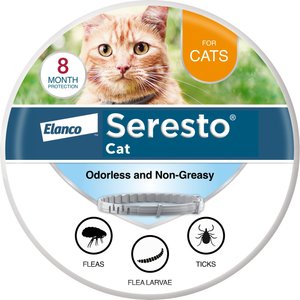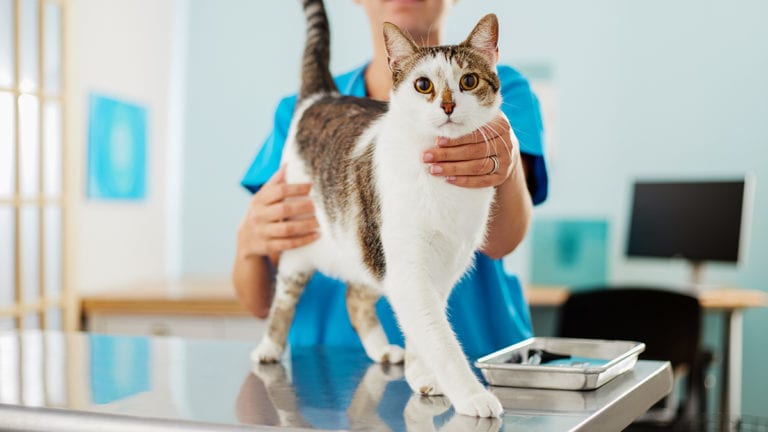With celebs like Bella Hadid and Avril Lavigne getting vocal about their struggle with the illness, the conversation around Lyme disease is growing—as it pertains humans, that is. But what about Lyme disease in dogs and cats? As pets are also able to contract the illness, Dr. Alison Birken, DVM, of Victoria Park Animal Hospital in Fort Lauderdale, Florida, is here to share what all pet parents need to know.
Few things are more terrifying to the pet parents I work with in my veterinary practice than seeing ticks on their beloved pets. Not only are the little pests creepy and crawly, but ticks can transmit dangerous diseases, including Lyme disease in dogs and cats.
Lyme disease is a serious bacterial infection that is transmitted by ticks and can cause an array of ailments, making it vital for pet parents to understand the symptoms of Lyme disease in dogs and cats, as well its treatment and how to prevent this disease.
How Do Dogs and Cats Get Lyme Disease?
Lyme disease is a bacterial infection caused by a bacteria species called Borrelia burgdorferi, and can affect humans as well as animals. Transmitted by infected deer ticks (Lxodes scapularis) and the Western black-legged ticks (Lxodes scapularis), Lyme disease can be contracted by pets when bitten by one of these infected ticks. Once bitten, the bacterial infection moves through the tick’s mouth and into the pet’s bloodstream.
Symptoms of Lyme Disease in Dogs and Cats
Symptoms of Lyme disease in cats and dogs include:
- Lameness, either in one particular leg or shifting between different legs (known as shifting leg lameness)
- Joint swelling
- Apparent pain in the joints
- Reluctance to move
- Arthritis
- Fever
- Loss of appetite
- Flu-like symptoms
- Swollen lymph nodes
There are also some symptoms that only a trained veterinarian can see through an exam and testing. These include:
- Platelet abnormalities
- Rare heart arrhythmias
- Kidney failure in severe cases
If you observe or suspect any of the above symptoms in your pet, or spot ticks on your pet, contact your vet as soon as possible.
Lyme Disease Test for Dogs and Cats
To diagnose Lyme disease in dogs and cats, your veterinarian will take a detailed history of your pet and perform a thorough physical examination. There are now specific blood tests, called SNAP 4Dx tests, that are available to test for Lyme disease in cats and dogs using just a small drop of your pet’s blood.
Your veterinarian may also perform the following diagnostics to help provide an accurate diagnosis:
- Chemistry blood panel to evaluate kidney, liver and pancreatic function, as well as sugar levels
- Blood parasite screening
- Fecal tests to rule out intestinal parasites
- CBC (a complete blood count)
- Urine tests to screen for urinary tract infections or other diseases, to look for protein, and to evaluate the kidney’s ability to concentrate urine
- An ECG (electrocardiogram) to screen for an abnormal heart rhythm
How to Treat Lyme Disease in Dogs and Cats
The success of Lyme disease treatment in dogs and cats is dependent upon how quickly your pet is diagnosed and how advanced the disease has progressed.
Doxycycline, an antibiotic, is the most commonly utilized medicine to treat Lyme disease. However, your veterinarian may prescribe a different antibiotic according to your pet’s unique case and circumstance.
In general, most pets respond well to treatment and chronic consequences can be avoided. It is always advised to follow up with your veterinarian after starting treatment for assessment and further testing.
Lyme Disease Prevention for Dogs and Cats
Proper tick preventatives and examining your pets regularly for ticks (and removing them if any are seen) are essential in preventing Lyme disease in dogs and cats.
Talk to your veterinarian about starting your pet on a flea and tick preventative, such as the Seresto 8 Month Flea & Tick Prevention Collar for Large Dogs, Seresto 8 Month Flea & Tick Prevention Collar for Small Dogs, or Seresto 8 Month Flea & Tick Prevention Collar for Cats & Kittens, if they aren’t on one already.
There is also a yearly Lyme disease vaccine for dogs available that you might want to consider if you live in a heavily tick-infested area and your pet is outdoors frequently.
It takes about 24-48 hours for a tick to transmit Lyme disease after they bite your pet, so regular examination is important in preventing disease transmission, especially if your pet takes walks or plays in tick-infested areas, such as wooded regions or tall grass. Ticks can commonly be found on the inside thighs, in between the toes, around the ears and near the belly.
Learn more about how to check a dog for ticks here.
If you spot a tick on your pet and wish to remove it yourself, you can use a pair of tweezers or the ZenPet Tick Tornado Tick Removal Tool to grasp the tick as close to the skin as possible and pull upward with steady pressure. Do not twist or jerk while pulling, as this may cause the head to break off and remain in the skin. A flea and tick comb, such as the Four Paws The Magic Coat Flea & Tick Comb, can also aid in the discovery and removal of ticks. I always inform my pet parents to practice caution when removing a tick from their dog or cat and to contact their veterinarian about how to proceed if they see any.
Parasites can be a pesky problem—not only in that moment of infestation, but even they’ve been removed due to the diseases they have the potential to carry. Call your veterinarian if any ticks are seen on your pet, or if any signs of Lyme disease in dogs and cats are suspected. They are your best resource to ensure the health and well-being of your pets!
And remember: You can help prevent this serious disease through monthly tick preventatives and treatment.
Share:














